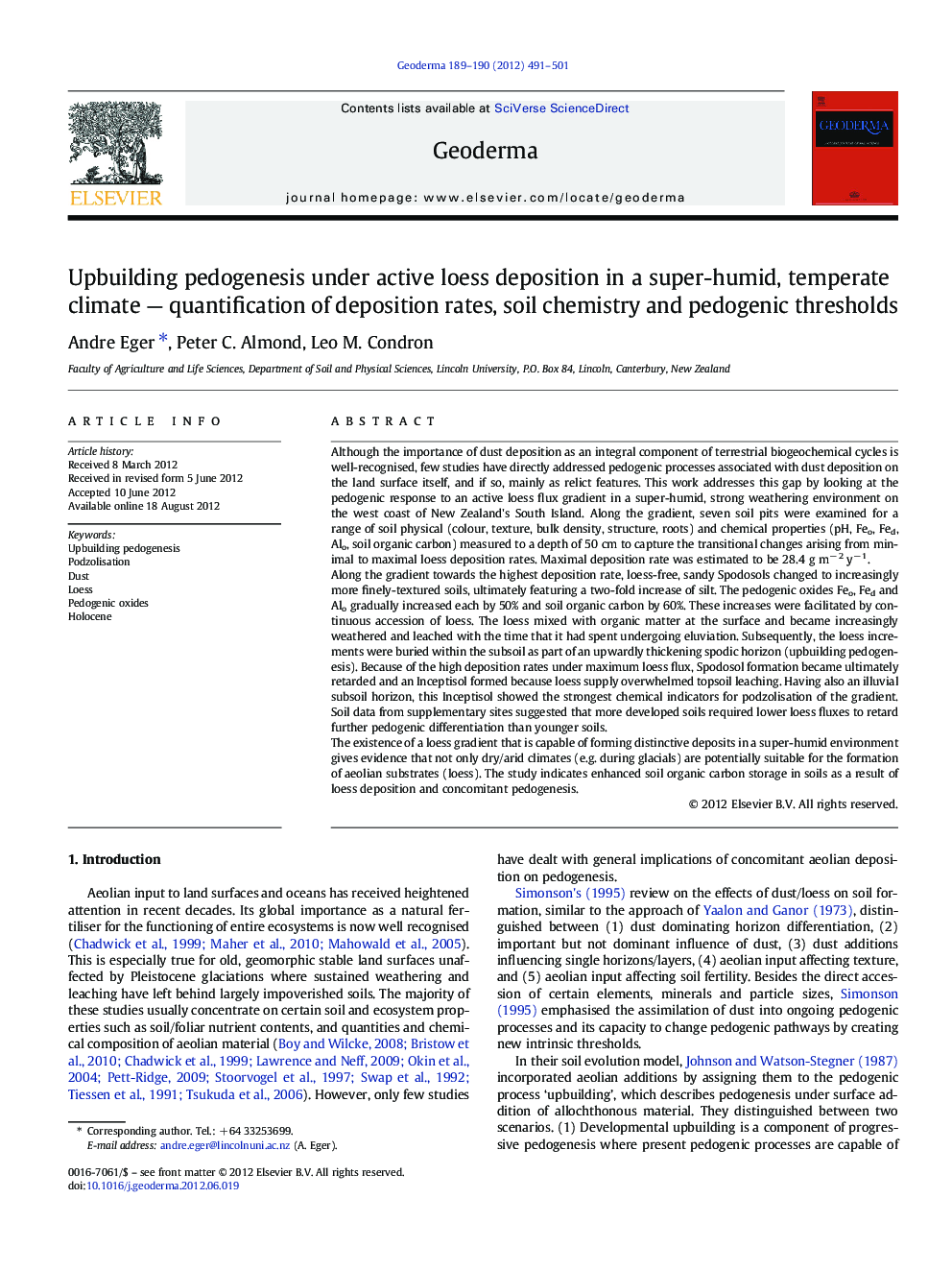| کد مقاله | کد نشریه | سال انتشار | مقاله انگلیسی | نسخه تمام متن |
|---|---|---|---|---|
| 4573623 | 1629493 | 2012 | 11 صفحه PDF | دانلود رایگان |

Although the importance of dust deposition as an integral component of terrestrial biogeochemical cycles is well-recognised, few studies have directly addressed pedogenic processes associated with dust deposition on the land surface itself, and if so, mainly as relict features. This work addresses this gap by looking at the pedogenic response to an active loess flux gradient in a super-humid, strong weathering environment on the west coast of New Zealand's South Island. Along the gradient, seven soil pits were examined for a range of soil physical (colour, texture, bulk density, structure, roots) and chemical properties (pH, Feo, Fed, Alo, soil organic carbon) measured to a depth of 50 cm to capture the transitional changes arising from minimal to maximal loess deposition rates. Maximal deposition rate was estimated to be 28.4 g m− 2 y− 1.Along the gradient towards the highest deposition rate, loess-free, sandy Spodosols changed to increasingly more finely-textured soils, ultimately featuring a two-fold increase of silt. The pedogenic oxides Feo, Fed and Alo gradually increased each by 50% and soil organic carbon by 60%. These increases were facilitated by continuous accession of loess. The loess mixed with organic matter at the surface and became increasingly weathered and leached with the time that it had spent undergoing eluviation. Subsequently, the loess increments were buried within the subsoil as part of an upwardly thickening spodic horizon (upbuilding pedogenesis). Because of the high deposition rates under maximum loess flux, Spodosol formation became ultimately retarded and an Inceptisol formed because loess supply overwhelmed topsoil leaching. Having also an illuvial subsoil horizon, this Inceptisol showed the strongest chemical indicators for podzolisation of the gradient. Soil data from supplementary sites suggested that more developed soils required lower loess fluxes to retard further pedogenic differentiation than younger soils.The existence of a loess gradient that is capable of forming distinctive deposits in a super-humid environment gives evidence that not only dry/arid climates (e.g. during glacials) are potentially suitable for the formation of aeolian substrates (loess). The study indicates enhanced soil organic carbon storage in soils as a result of loess deposition and concomitant pedogenesis.
► Holocene loess deposition gradient of up to 28 g m− 2 y− 1 in a super-humid environment.
► Dust flux increase correlates with enhanced podzolisation and soil organic matter storage.
► Evidence for developmental, upbuilding pedogenesis.
► Loess flux necessary to slow down pedogenic progression declines with soil age.
Journal: Geoderma - Volumes 189–190, November 2012, Pages 491–501